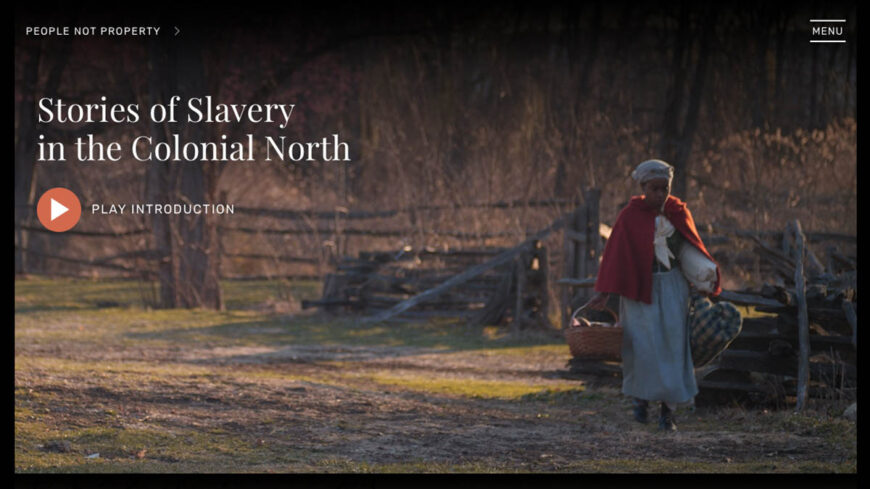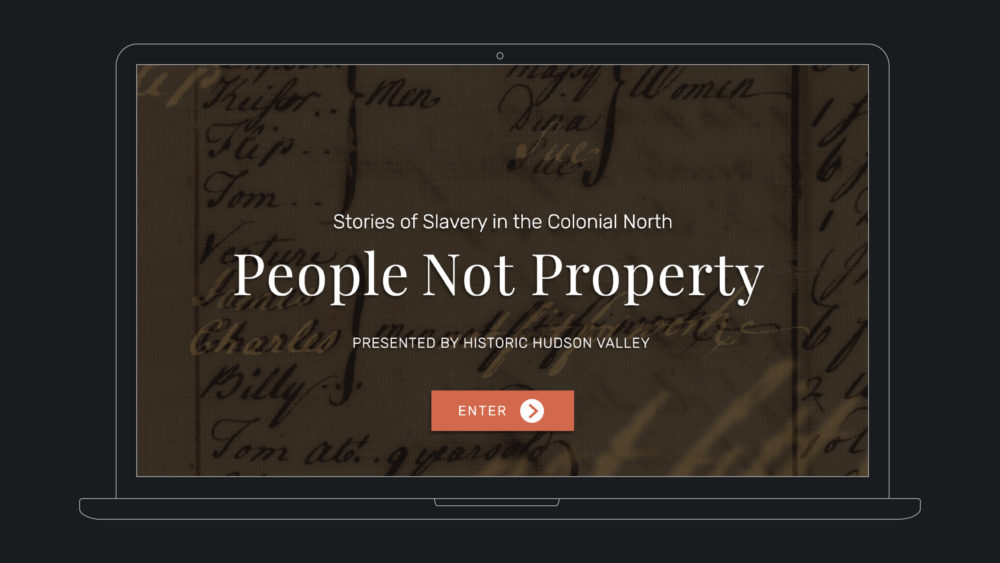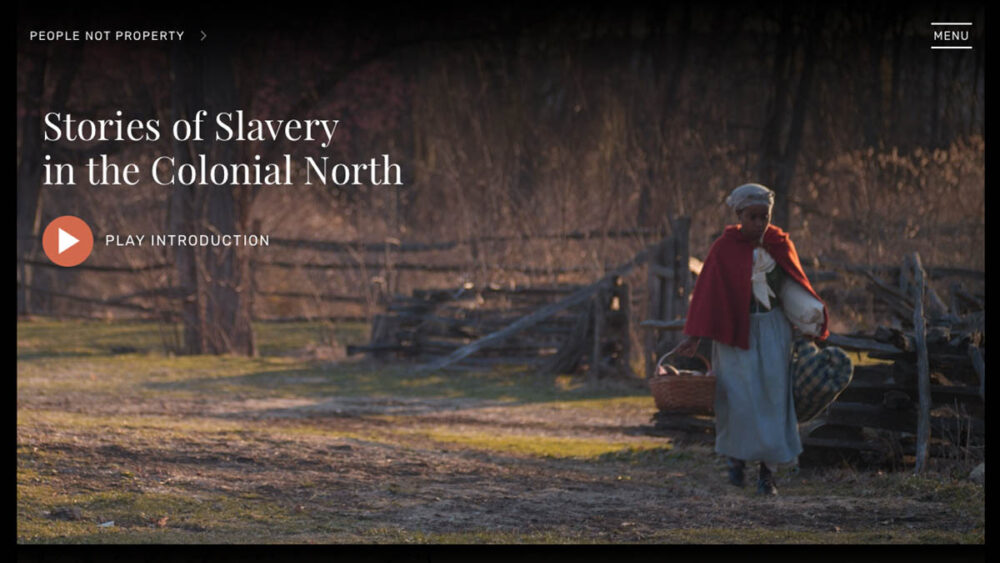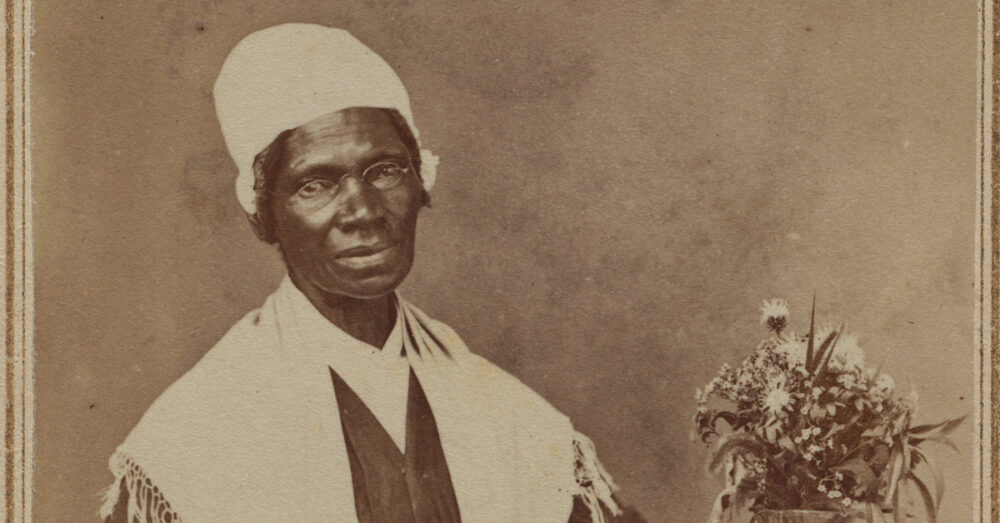HHV Receives Accolades for “People Not Property” and More

Best practices and lessons learned by the education staff at Historic Hudson Valley (HHV) are part of a new book for the museum field, Creating Meaningful Museum Experiences for K-12 Audiences: How to Connect with Teachers and Engage Students (Rowman & Littlefield and the American Alliance of Museums, 2021). The chapter on teaching about slavery in the colonial North was written by HHV’s former Education Manager Margaret Hughes. Other chapters, which were solicited through a competitive proposal process, focus on children’s museums, distance learning, and the logistics of field trips, and were written by individuals at the Guggenheim, the Field Museum, the National Gallery of Art, and the Rock & Roll Hall of Fame, to name a few. HHV has a growing national audience for content on slavery in the colonial North, and we are honored to share our experiences with even more educators.
Closer to home, during Black History Month in February, Hughes and Sarah Cox, one of our education program associates, spoke virtually to students at Sleepy Hollow High School. Hughes showed segments from HHV’s award-winning documentary, People Not Property: Stories of Slavery in the Colonial North, to emphasize the importance of understanding the world today through local history. They watched a short video about Caesar, the miller at Philipsburg Manor, and how his skills and those of other enslaved people contributed to the country’s growth and wealth. Cox talked about her ongoing efforts to encourage leaders in Irvington to commemorate enslaved residents and urged students to find their own productive avenues to promote and preserve history.
People Not Property
- HHV’s award-winning documentary, People Not Property: Stories of Slavery in the Colonial North, continues to attract national attention. In March, an article in BillyPenn.com about enslaver William Penn, founder of the colony of Pennsylvania, linked to the bittersweet story of a married enslaved couple who are the subject of “Jack & Parthenia.” The video on the People Not Property website is a reenactment of their brief, final meeting before Parthenia is sold and sent to Barbados.
- People Not Property got a shoutout on Twitter from Mark Walhimer @MuseumPlanning. His “Online Museums” survey, conducted when museums are mostly shuttered for COVID-19, declared that HHV’s interactive documentary “may be the closest to what I would think of as an ‘online museum.’ The website and the content is set up in a hierarchy of information that takes the online visitor from major topics to minor topics. The content is impactful and educational. Also, the breadth of the content is on the level of ‘museum’ instead of ‘exhibition.’” Second on Walhimer’s list is NASA’s Exoplanets website.
- The National Endowment for the Humanities (NEH), which supported People Not Property with several grants, included HHV’s documentary on the EDSITEment website with the “best humanities on the web.” A link to People Not Property and other resources for the NEH’s “Building a More Perfect Union” curriculum appeared in the article “Digging Deeper for Unfamiliar Stories about the American Resolution.” The article suggested that the “treatment of people of African descent—and the rights they were afforded—[is] another way of exploring the revolutionary nature of the war and the era as a whole.”
In the Company of Greatness

of Pocantico Hills
The HHV Library just received a copy of the luscious Chagall: Le passeur de lumière catalog from the Centre Pompidou in Paris. In it you’ll find Chagall’s colorful Good Samaritan and eight other windows in the Union Church of Pocantico Hills commissioned by the Rockefeller family. They are in good company with all of the acclaimed artist’s other stained-glass projects.
Inspired by Sketch Book
An educator who participated in the 2019 Summer Teachers Institute reached out to our education staff for a way to incorporate Washington Irving into her middle school creative writing classes. The suggestion to use Irving’s Sketch Book inspired lessons to create virtual sketchbooks on Google Sites. “It’s awesome!” she wrote back. Her students read “Author’s Account of Myself,” and modeled Irving’s style to write their own. They read “The Country Church” and wrote their own setting sketches. “We looked at parts of “The Legend of Sleepy Hollow,” and I was able to show them lots of fun things I picked up from my Historic Hudson Valley trip. Now they are writing their own short stories! I’m really very happy with how this unit turned out and owe it all to your fantastic suggestion about looking at The Sketch Book.”














